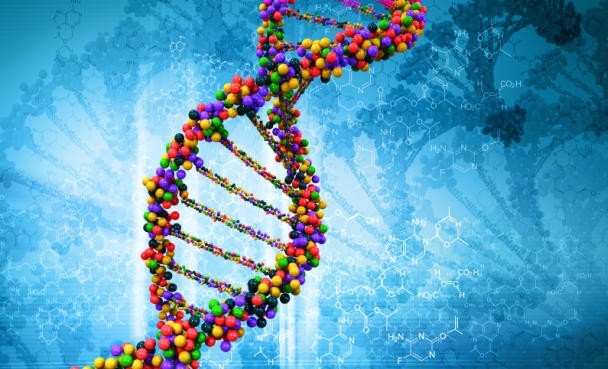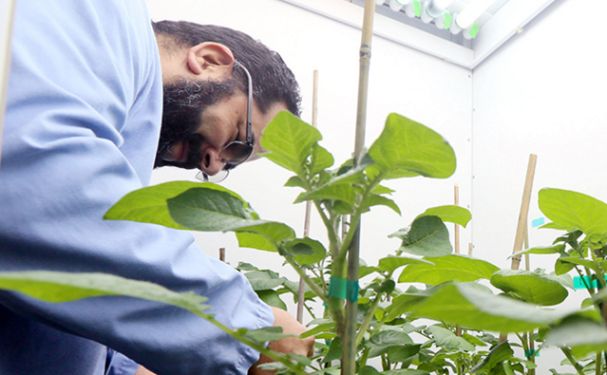What’s a GMO? Mushrooms, ‘gene-editing’, and a brave new world for regulators?

The mushrooms at issue were developed by Yinong Yang, a researcher at Penn State University who has used CRISPR/Cas9 to snip out DNA from white button mushrooms to suppress production of polyphenol oxidase, an enzyme responsible for browning (click HERE for details).
As no foreign genetic material was introduced to the mushrooms, officials at USDA’s Animal and Plant Health Inspection Service (APHIS) recently wrote to Dr Yang informing him that they were not subject to 7 CFR part 340 of the Plant Protection Act (which considers whether GM crops might be classed as ‘plant pests’) and therefore not subject to regulatory scrutiny.
(Readers may recall that Arctic apples with similar non-browning qualities were subjected to a plant pest risk assessment by USDA as they were created using techniques that did involve the introduction of novel genetic material).
CSPI: Regulatory framework is too narrowly focused on specific plant-breeding techniques
While there is no reason to believe the mushrooms present any risks, the letter has raised questions about the way GM crops are regulated, Gregory Jaffe, biotech program coordinator at the Center for Science in the Public Interest, told FoodNavigator-USA.
In USDA's case, argued Jaffe, the regulatory framework is too narrowly focused on specific plant-breeding techniques – rather than an objective assessment of risk – and could potentially allow products made with modern biotech techniques to slip through the cracks without proper scrutiny, or in turn force producers of crops developed with more traditional biotech techniques to jump through unnecessary hoops.
As for the FDA, which looks at food safety, while any company attempting to commercialize crops produced via CRISPR/Cas9-type technologies may share data with the FDA to demonstrate why they might be ‘substantially equivalent’ to regular crops, and therefore safe to eat, this process is voluntary, Jaffe noted.
What's a GMO?
San Diego-based Cibus, which launched a herbicide-resistant canola in 2015 and describes itself as “the leader in precision gene editing in agriculture”, says its proprietary Rapid Trait Development System can create plants with desirable traits “without integrating foreign genetic material”.
It adds: “Since our improvements are non-transgenic, they will be globally acceptable.”
Supporters of gene-editing technology – described by some as like using a ‘molecular scalpel’ to make precise changes in the DNA and cells of organisms without introducing genes from unrelated species – say it could enable the development of everything from drought resistant crops and bananas resistant to devastating fungal diseases to non-allergenic peanuts.
However, Dr Michael Hansen, senior scientist at the Consumers Union, fears that it could fall under the radar of current regulatory frameworks.
In a comment to the FDA, he recently argued that “the definition of genetic engineering should be broad enough to include all the newer genetic engineering techniques such as RNAi or the new gene-editing technologies (e.g., CRISPR-cas9, TALEN, ZNF, meganucleases, etc.)” and that the products of such technologies “should be required to go through systematic assessments of human and environmental effects and indirect economic effects (such as contamination of organic or non-GE crops leading to rejection in foreign markets, spread of resistant pests, etc.) before [they] are allowed on the market.”
He added: “some of the risks of GE organisms are novel and not covered by existing laws, which has led the agencies to force the organisms to fit their regulatory authority. In a sense, the [government’s] Co-ordinated Framework [for the Regulation of Biotechnology] ended up with various agencies trying to fit square pegs into round holes.”
Is USDA setting the right criteria for whether GE crops should be regulated?
For USDA, whether crops are plant pests is not the only pertinent question to ask, argued Jaffe. “The issue isn’t whether it fits with the definition of a plant pest in the statute, but whether it represents a risk.”
Just because something incorporates genes from a plant virus, for example, doesn’t mean that it is automatically/inherently risky, just as a product in which genetic material has been removed using CRISPR/Cas-9 techniques isn’t automatically/inherently safe, he said.
“They are making decisions not based on science and risks but whether things fall within the scope of the language of a definition [in the Plant Protection Act].
"Maybe you have a genetically engineered crop with a trait produced through agrobacterium [plant parasites used as a means of inserting foreign genes into plants] and then you could put the same gene into the same crop with a gene gun to produce the same trait, so the risk might be the same, but one crop is regulated and one is not regulated, then it doesn’t inspire confidence in the public.”
Crop scientist: ‘It is not appropriate to talk about gene-editing as if it is one process’
Dr Wayne Parrott, professor of crop science at the University of Georgia, added: “Any regulation based on process rather than product makes about as much sense as saying that food cooked on a gas stove needs to be regulated but that food cooked on an electric stove does not. On top of that, 'Genetic Modification' is a very artificial concept with little biological relevance as used in regulations around the world."
He added: "It is also not appropriate to talk about gene-editing as if it is one process… Risk comes with a product, not how the product is obtained. Therefore, switching to a product-based regulatory system is the only way to cover everything from new techniques to synthetic biology, without having to write any new regulations. Otherwise, technology and products will always run ahead of regulations."
As for the non-browning mushroom, he said: "They could have done the same thing using X-rays or other radiation, and nobody would have cared, because there is no safety issue. It is high time to focus on the product, not how it was achieved."
Dr. Joyce Van Eck, Assistant Professor, Boyce Thompson Institute, added: "Overall, I would like to see the regulatory process for all crop improvement approaches be based on evaluation of the end products and not be overly scrutinized based on the process used for development.
"I hope the new regulatory structure will be similar to the five steps outlined in the Nature Genetics article by Huang et al. (2016) with a focus on evaluation of the products and not the methods used to develop them."
CFS: current rules governing GM crops ‘are almost entirely voluntary, and full of loopholes’
However, Doug Gurian-Sherman, PhD, senior scientist at the Center for Food Safety, which has been very vocal about its concerns about GE crops, argued that gene-editing techniques, while ultra-precise, could nevertheless have unpredictable consequences, and that all crops generated by them should require pre-market approval.
Dr Gurian-Sherman told FoodNavigator-USA: "Almost all genes have multiple functions, so there can be unintended consequences of knocking them out in relation to whether that plant can defend itself against viruses, for example.
"This particular application (non-browning white button mushrooms) could be completely innocuous, but that's not the point. The plant pest criteria worked in the 1980s because most GM crops were made using genes from plant pests [eg. Bt crops genetically engineered to contain their own insecticidal proteins because they contain genes from the soil bacterium Bacillus thuringiensis], but gene editing and other more modern biotech techniques can slip through the cracks in this regulatory framework completely.
"If USDA does look at a new crop, at least the public gets to see its preliminary risk assessments and the petition from the applicant, so you can see the data that was submitted and reviewed, but if it doesn't regulate them at all, then there's a complete black box."
NAS committee explores whether we need a new framework for regulating GMOs
Their comments came as a committee put together by the National Academy of Sciences met on Monday (April 18) to explore new biotechnologies and ways to regulate them. The committee (see its composition HERE) is aiming to produce a report by the end of 2016.
The question it has been asked to answer is: “What will the likely future products of biotechnology be over the next 5-10 years? What scientific capabilities, tools, and/or expertise may be needed by the regulatory agencies to ensure they make efficient and sound evaluations of the likely future products of biotechnology?”










